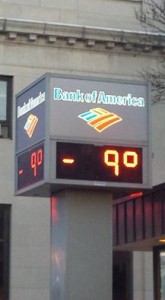 WESTFIELD–With winter’s icy grips starting to close on the city, many homes’ heating systems are being cranked up to ward off the chill.
WESTFIELD–With winter’s icy grips starting to close on the city, many homes’ heating systems are being cranked up to ward off the chill.
However, when some heating units are turned on, especially after periods of dormancy and not being properly serviced, they could cause dangerous levels of carbon monoxide to build in your home. These levels could cause carbon monoxide (CO) poisoning, which could lead to a variety of symptoms, up to death.
That’s why it’s important for homeowners to know sources of carbon monoxide, get inspections of their heating units and carbon monoxide detectors at the beginning of every heating season, Westfield Fire deputy chief Eric Bishop said.
The places where the colorless, odorless and tasteless gas come from can be many in a home and the origin of the chemical compound is rather simple.
”Carbon monoxide is due to an incomplete burn of fossil fuels,” Bishop said.
Dr. Craig Schacher, director of the Baystate Noble emergency room and specialist in carbon monoxide poisoning, said that most heating units have a potential to cause carbon monoxide emission.
“Burning things in a confined space, grills indoors, propane, any cars, trucks, generators in the garage can emit carbon monoxide,” Schacher said. “The other time we see it is when the fall or winter arrives and people start using their furnaces and they’re not working properly or aren’t vented properly.”
Schacher said that as the carbon monoxide is produced, it can seep into the home through any number of ways, from open doors, improper seals and even drywall and porous doors.
Once the carbon monoxide is in the home, it can poison you, possibly working slowly, but in concentrations high enough, Schacher said it can cause symptoms in minutes.
“Carbon monoxide poisoning makes it really hard for the system to release oxygen and makes it difficult for oxygen to bind, so it reduces the amount of oxygen in tissue,” Schacher said.
Schacher said that this is because carbon monoxide binds to hemoglobin–which is the oxygen transporter in blood–and has a higher affinity, or attraction, to the hemoglobin than oxygen does. The process though, is not yet fully understood.
This lack of oxygen can cause a myriad of issues, from heart tissue death–or ischemia–to problems in cellular respiration, which reduces the body’s cells from producing energy–or metabolizing–to inflammation in the brain, which can cause damage to the nervous system.
The symptoms, which Schacher described as largely nonspecific and flu-like, include headache, malaise, nausea, tiredness, dizziness or lightheadedness.
In later stages though, the symptoms can include fainting, seizures, coma and eventually, death.
In addition, an acute poisoning from carbon monoxide can have a number of long-term effects, and even chronic low-level exposure have been said to be the cause of memory loss and confusion.
So, when you turn on your heating units this season, remember to have them inspected by qualified experts. To find out more information, contact your heating provider and ask for more details about heating inspections.
And if you’re concerned that you may have been exposed to carbon monoxide at a dangerous level, Schacher urges you to seek immediate medical attention. If you are concerned but are unsure if you have symptoms, or that an exposure occurred, local fire departments also have the technology and training to inspect a home for possible carbon monoxide.


